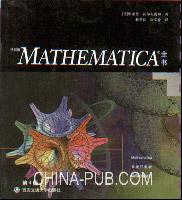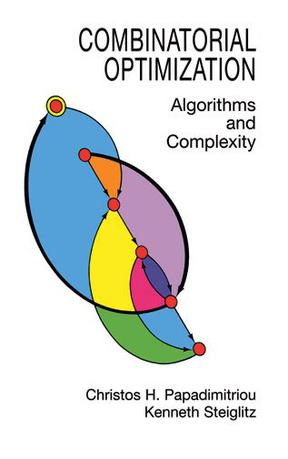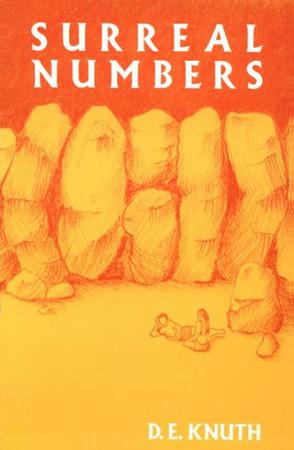-

特别版MATHEMATICA全书
-

计算几何
《计算几何:算法与应用》(第2版)的前4章对几何算法进行了讨论,包括几何求交、三角剖分、线性规划等,其中涉及的随机算法也是《计算几何:算法与应用》(第2版)的一个鲜明特点。第5章至第10章介绍了多种几何结构,包括几何查找、kd树、区域树、梯形图、Voronoi图、排列、Delaunay三角剖分、区间树、优先查找树以及线段树等。第11章至第16章结合实际问题,继续讨论了若干几何算法及其数据结构,包括高维凸包、空间二分及BSP树、运动规划、网格生成及四叉树、最短路径查找及可见性图、单纯性区域查找及划分树和切分树等,这些也是对前十章内容的进一步深化。 -

复杂网络理论及其应用
国内首部复杂网络专著 【图书目录】 第1章 引论 1.1 引言 1.2 复杂网络研究简史 1.3 基本概念 1.4 本书内容简介 参考文献 第2章 网络拓扑基本模型及其性质 2.1 引言 2.2 规则网络 2.3 随机图 2.4 小世界网络模型 2.5 无标度网络模型 2.6 局域世界演化网络模型 2.7 模块性与等级网络 2.8 复杂网络的自相似性 参考文献 第3章 Internet拓扑特性及建模 3.1 引言 3.2 Internet的拓扑特性 3.3 随机图产生器 3.4 结构产生器 3.5 基于连接度的产生器 3.6 多局域世界模型 3.7 各类模型的定性比较 参考文献 第4章 复杂网络上的传播机理与动力学分析 4.1 引言 4.2 复杂网络的传播临界值理论 4.3 复杂网络的免疫策略 4.4 复杂网络的传播动力学 4.5 计算机病毒在Internet上的传播 4.6 复杂网络中的其他传播现象 参考文献 第5章 复杂网络上的相继故障 5.1 引言 5.2 复杂网络相继故障的动态模型分析 5.3 基于耦合映象格子的相继故障模型 参考文献 第6章 复杂网络中的搜索 6.1 引言 6.2 社会网络搜索 6.3 几种复杂网络搜索策略分析 6.4 P2P网络中的搜索 6.5 复杂网络中的搜索和拥塞 参考文献 第7章 复杂网络中的社团结构 7.1 引言 7.2 Kernighan—Lin算法 7.3 谱平分法 7.4 分裂方法 7.5 凝聚算法 7.6 派系过滤算法 参考文献 第8章 复杂网络中的同步 8.1 引言 8.2 复杂网络的完全同步判据 8.3 复杂动力网络的完全同步 8.4 连续时间时变耦合网络完全同步 8.5 其他网络完全同步判据 8.6 复杂网络中各个因子与完全同步的关系 8.7 改进复杂网络同步的方法 8.8 复杂网络的相位同步 参考文献 第9章 复杂动态网络的控制 9.1 引言 9.2 规则网络时空混沌的牵制控制 9.3 无标度动态网络的牵制控制:鲁棒性与脆弱性 9.4 一般复杂动态网络的牵制控制 9.5 随机驱动下动态网络的有序性与动力学 参考文献 附录名词对照 -

离散数学教程
《离散数学教程》共分五编。第一编为集合论,其中包括集合的基本概念、二元关系、函数、自然数、基数、序数。第二编为图论,其中包括图的基本概念、图的连通性、欧拉图与哈密顿图、树、平面图、图的着色、图的矩阵表示、覆盖集、独立集、匹配、带权图及其实用。第三编为代数结构,其中包括代数系统的基本概念、几个重要的代数系统:半群、群、环、域、格与布尔代数。第四编为组合灵敏学,其中包括组合存在性、组合计数、级合设计与编码以及组合最优化。第五编为数理逻辑,其中包括命题逻辑、一阶谓词逻辑、Her-brand定理和直觉逻辑。 -

Combinatorial Optimization
Clearly written graduate-level text considers the Soviet ellipsoid algorithm for linear programming; efficient algorithms for network flow, matching, spanning trees, and matroids; the theory of NP-complete problems; approximation algorithms, local search heuristics for NP-complete problems, more. "Mathematicians wishing a self-contained introduction need look no further." -- "American Mathematical Monthly." 1982 edition.. -

Surreal Numbers
From the Back Cover Nearly 30 years ago, John Horton Conway introduced a new way to construct numbers. Donald E. Knuth, in appreciation of this revolutionary system, took a week off from work on The Art of Computer Programming to write an introduction to Conway's method. Never content with the ordinary, Knuth wrote this introduction as a work of fiction--a novelette. If not a steamy romance, the book nonetheless shows how a young couple turned on to pure mathematics and found total happiness. The book's primary aim, Knuth explains in a postscript, is not so much to teach Conway's theory as "to teach how one might go about developing such a theory." He continues: "Therefore, as the two characters in this book gradually explore and build up Conway's number system, I have recorded their false starts and frustrations as well as their good ideas. I wanted to give a reasonably faithful portrayal of the important principles, techniques, joys, passions, and philosophy of mathematics, so I wrote the story as I was actually doing the research myself."... It is an astonishing feat of legerdemain. An empty hat rests on a table made of a few axioms of standard set theory. Conway waves two simple rules in the air, then reaches into almost nothing and pulls out an infinitely rich tapestry of numbers that form a real and closed field. Every real number is surrounded by a host of new numbers that lie closer to it than any other "real" value does. The system is truly "surreal." quoted from Martin Gardner, Mathematical Magic Show, pp. 16--19 Surreal Numbers, now in its 13th printing, will appeal to anyone who might enjoy an engaging dialogue on abstract mathematical ideas, and who might wish to experience how new mathematics is created.